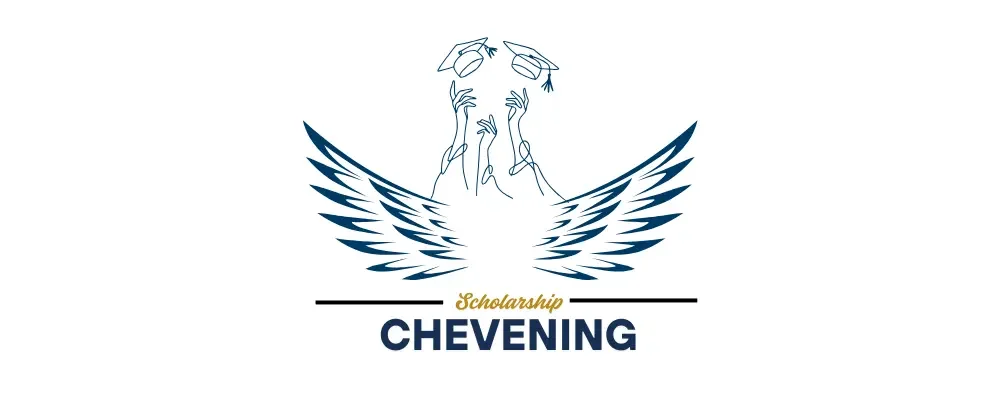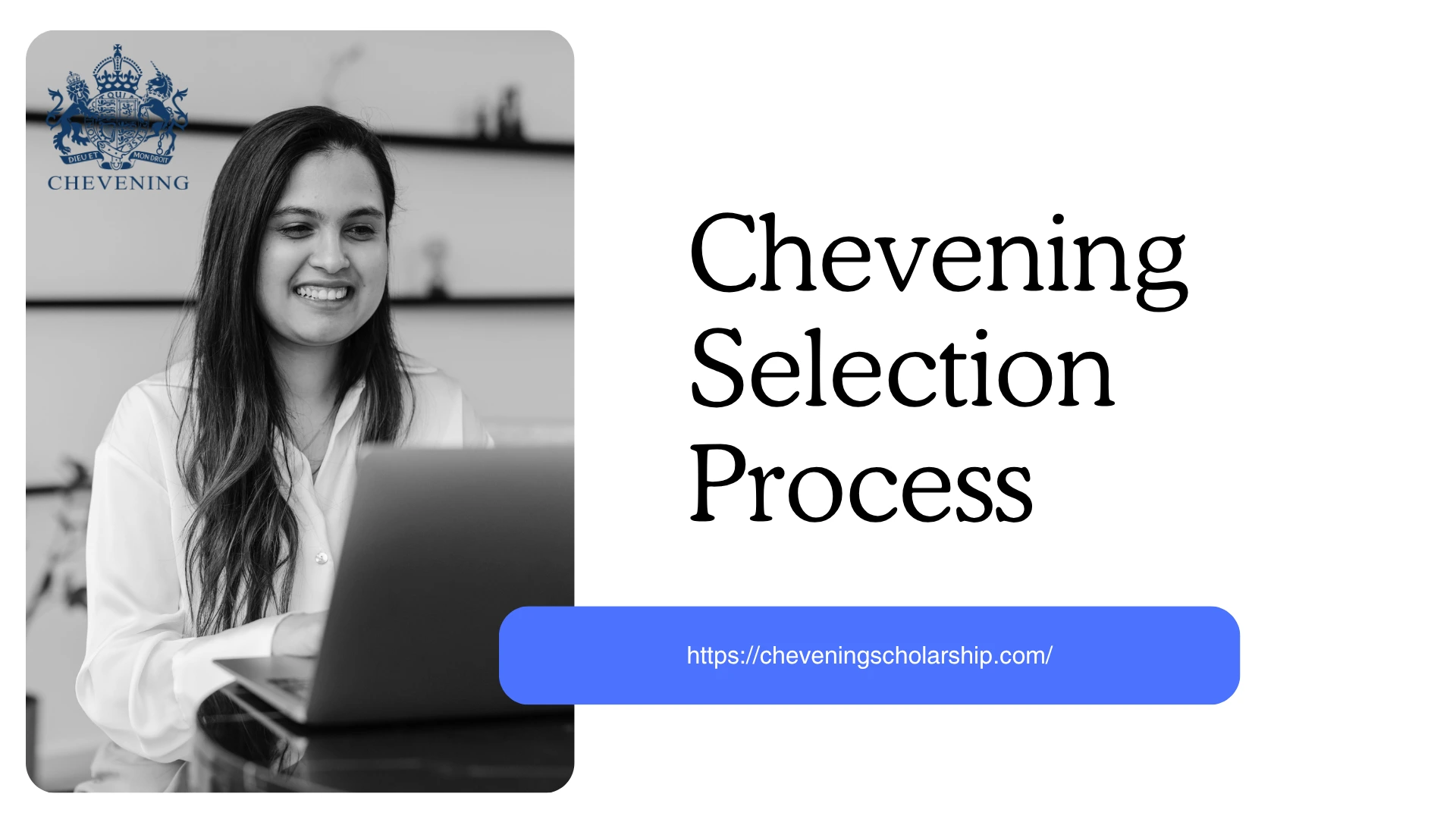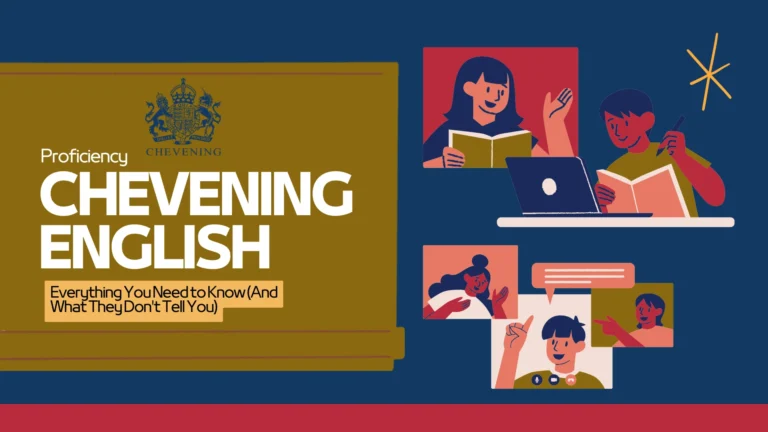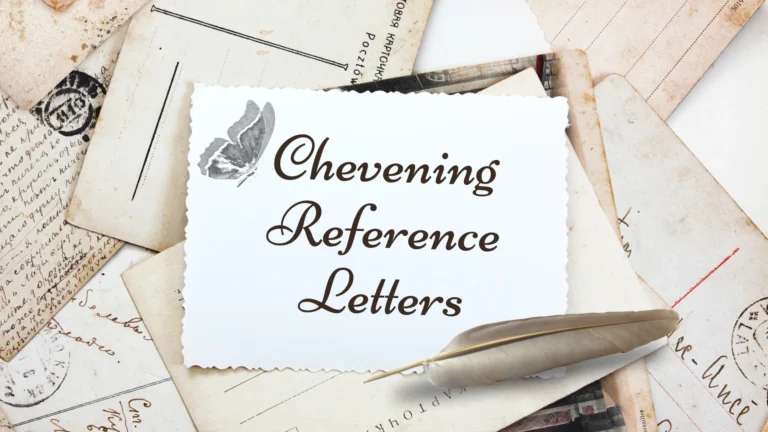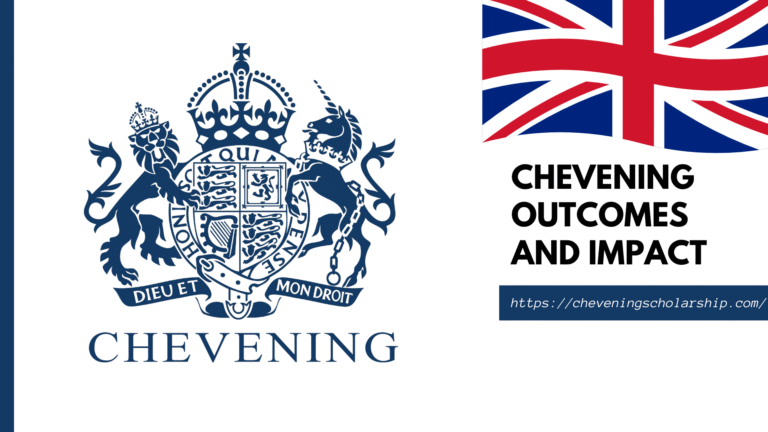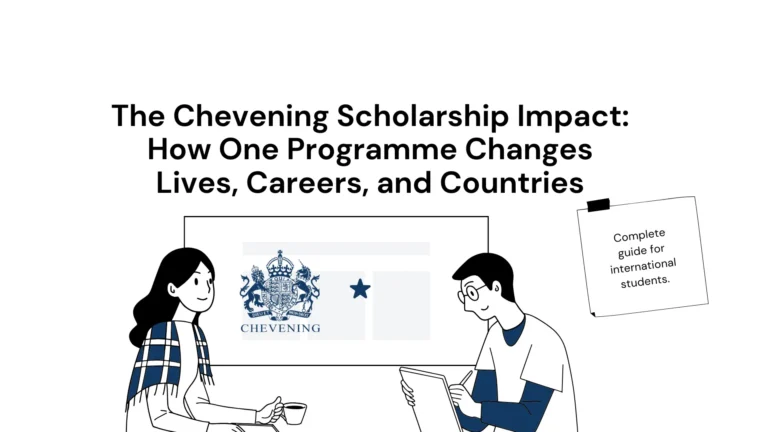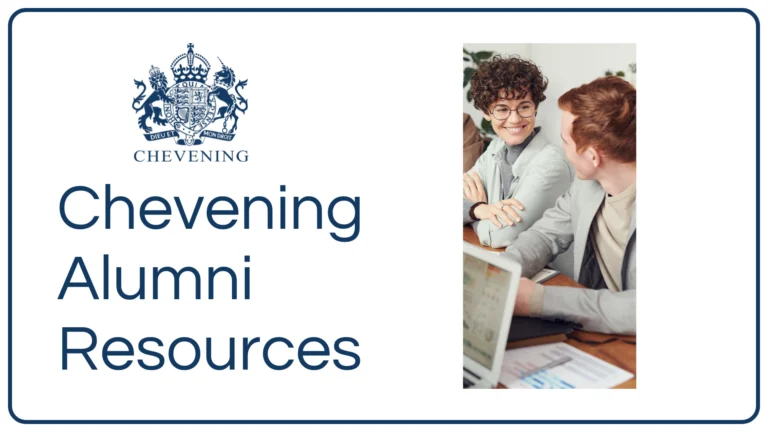The Chevening Selection Process: Your Complete Roadmap from Application to Acceptance
Picture this: You’ve just hit “submit” on your Chevening application. Your heart’s racing a bit, your palms might be sweaty, and now you’re staring at that confirmation email wondering—what happens next? When will I hear back? How do they actually decide who gets this thing?
Welcome to the Chevening selection process, one of the most rigorous and competitive scholarship selections in the world. And here’s the truth nobody tells you upfront: understanding exactly how this process works isn’t just helpful—it’s absolutely essential to your success.
I’m going to walk you through every single stage, every deadline, every decision point. By the end of this, you’ll know exactly what to expect, when to expect it, and how to position yourself for success at each stage.
What Actually Is the Chevening Selection Process?
Let’s get the basics straight first. The Chevening selection process isn’t a single event—it’s a marathon that typically spans about nine months from when applications open to when final decisions are announced.
Think of it as a multi-stage filter. At each stage, the pool of candidates gets smaller and smaller. You start with thousands of applicants worldwide, and by the end, only about 1,500 scholarships are awarded globally. That’s roughly a 3-5% acceptance rate, depending on the year and your country of origin.
But here’s what most people don’t realize: the selection process isn’t designed to trick you or catch you out. It’s methodically structured to identify candidates who demonstrate three core things: leadership potential, networking ability, and a genuine commitment to returning home and creating change.
Mastering the Chevening Application Portal: Your Complete Step-by-Step Guide
The Chevening Selection Process Timeline: What Happens When
Timing is everything in the Chevening selection process, so let me break down the typical timeline. Note that exact dates can vary slightly year to year, but the structure remains consistent.
Stage 1: Application Period (August – November)
Applications typically open in early August and close in early November. That gives you roughly three months to complete your application.
What’s happening behind the scenes: Not much yet. The Chevening team is collecting applications from around the world. During this time, your only job is to submit the strongest application possible before that deadline.
Critical deadline: Early November (usually the first Tuesday). The application portal closes at midnight UK time, and there are no extensions. None. I’ve seen brilliant candidates miss out because they left it until the last hour and their internet cut out. Don’t be that person.
Stage 2: Initial Assessment (November – January)
Once applications close, the real selection process begins. This is when your application gets its first serious review.
What’s happening: Your application is assessed against the Chevening selection criteria by panels of reviewers. They’re looking at your essays, your work experience, your references—everything you submitted. This stage is purely desk-based; no one’s calling you or your referees yet.
What you should do: Absolutely nothing. This is the hardest part—waiting. But attempting to contact Chevening or your referees during this period won’t help your case.
Stage 3: Shortlisting (January – February)
By late January or early February, the Chevening team has narrowed down thousands of applications to a shortlist for interviews.
The numbers: Only about 10-15% of total applicants get shortlisted for interviews. In competitive countries, this percentage can be even lower.
Notification: If you’ve been shortlisted, you’ll receive an email invitation to interview. This is the moment you’ve been waiting for, and yes, you’re allowed to celebrate—but only briefly, because now the real work begins.
What if you don’t hear anything? If you haven’t received an interview invitation by mid-February, unfortunately, your application wasn’t shortlisted this year. Chevening typically doesn’t send rejection emails at this stage, so silence usually means no interview.
Stage 4: Interview Preparation Period (February – April)
If you receive an interview invitation, you’ll typically have 2-4 weeks’ notice before your scheduled interview slot.
What’s happening: Interviews are conducted by panels in British embassies, high commissions, or consulates in your country. The exact timing depends on your location—some countries interview in February, others in March or April.
Your mission: This preparation window is critical. The interview can make or break even the strongest application. We’ll dive deeper into interview prep later, but use every single day of this preparation period wisely.
Stage 5: The Interview (February – May)
The Chevening interview process typically runs from February through May, depending on your country.
Format: You’ll face a panel of 2-4 interviewers, usually including British diplomatic staff, Chevening alumni, and sometimes academics or professionals. Interviews last 20-30 minutes and cover everything from your leadership experience to your specific study plans.
Atmosphere: Professional but not hostile. The panel wants you to succeed—they’re looking for reasons to award you the scholarship, not reasons to reject you.
Chevening Eligibility 2025: Your Complete Guide to Qualifying for the UK’s Premier Scholarship
Stage 6: Post-Interview Wait (March – June)
After your interview, you enter another waiting period. This one’s particularly excruciating because you’ve now invested so much effort, and the finish line feels tantalizingly close.
What’s happening: Interview panels submit their assessments to the Chevening secretariat in London. The final selection committee reviews all interviews globally and makes the ultimate decisions about who receives offers, who goes on the waitlist, and who receives regrets.
Timeline: Results typically come out in late June or early July, roughly 8-12 weeks after your interview.
Stage 7: Results and Offers (June – July)
Final results are announced! You’ll receive one of three possible outcomes:
- Unconditional offer: Congratulations! You’ve been selected, pending your university admissions.
- Waitlist: You’re a strong candidate but not offered a place immediately. If selected scholars decline their offers, you might move up.
- Unsuccessful: Your application wasn’t selected this time.
Important: An offer at this stage is conditional on you securing admission to an eligible UK university for the upcoming academic year.
Stage 8: University Applications and Final Confirmation (June – August)
If you receive an offer, you now need to:
- Secure admission to one of your chosen UK universities
- Submit your final university offer letter to Chevening
- Complete any additional paperwork
Final deadline: Usually late July or early August to confirm your university placement. This is crucial—failing to secure university admission means losing your Chevening scholarship.
Understanding the Chevening Selection Criteria
Now that you know when things happen, let’s talk about how decisions are made. The Chevening selection criteria are public, but understanding how they’re actually applied is where most candidates struggle.
Leadership and Influence (The Non-Negotiable)
This is the big one. Chevening is fundamentally looking for future leaders, and your application needs to demonstrate that you’ve already shown leadership qualities.
But here’s the nuance: leadership doesn’t mean you need to be a CEO or a government minister. The panel is looking for evidence that you:
- Take initiative when others don’t
- Influence people and situations toward positive outcomes
- Create change that outlasts your direct involvement
- Learn and adapt your leadership style based on circumstances
Red flag: Applications that confuse management with leadership, or that claim leadership without providing specific examples.
Networking Skills (More Strategic Than You Think)
The Chevening assessment panel wants to see that you understand networking as a deliberate skill, not just something that happens when you’re social.
Strong candidates demonstrate:
- Strategic relationship building for specific goals
- Connecting people, ideas, and resources across boundaries
- Maintaining meaningful professional relationships over time
- Using networks to create opportunities for others, not just themselves
Red flag: Name-dropping without substance, or treating networking as collecting business cards.
Academic and Professional Background
Your qualifications matter, but they’re not everything. The panel assesses:
- Quality and relevance of your work experience
- Academic achievements (usually a 2:1 or equivalent degree minimum)
- Clarity of your career trajectory
- How a UK master’s degree fits into your professional development
Red flag: Applications from candidates whose career plans seem disconnected from their proposed study, or who appear to be using Chevening as a career change opportunity rather than advancement.
Commitment to Home Country
This is where Chevening differs from many other scholarships. The selection process explicitly favors candidates who demonstrate:
- Clear intention to return home after studies
- Understanding of specific development needs in their country
- Plans to apply their new knowledge and skills domestically
- Track record of domestic professional engagement
Red flag: Any hint that you’re using Chevening as a pathway to remain in the UK or emigrate elsewhere.
The Chevening Interview Process: What Really Happens
Let’s talk about the stage that causes the most anxiety: the interview. I’ve seen too many brilliant candidates stumble here simply because they didn’t understand what the panel was actually looking for.
Interview Format and Structure
Your Chevening interview will typically follow this pattern:
Opening (2-3 minutes): Brief introductions and ice-breaker questions. The panel will try to put you at ease—they’re not trying to intimidate you.
Leadership and Experience Deep-Dive (8-10 minutes): Questions probing specific examples from your application. Expect “tell me about a time when…” scenarios focusing on leadership, problem-solving, and influence.
Study Plans and Career Goals (5-7 minutes): Questions about why you chose your specific universities and courses, and how they fit into your career plan.
Country Contribution (5-7 minutes): Questions about how you’ll use your Chevening experience to benefit your home country. This is where your understanding of domestic challenges and opportunities gets tested.
Closing (2-3 minutes): Your chance to ask questions and make any final points you feel are important.
Chevening Scholarships 2025: Your Complete Guide to Winning the UK’s Premier Award
Common Chevening Interview Questions You Should Prepare For
While every interview is unique, certain questions come up repeatedly in the Chevening interview process:
Leadership questions:
- Tell us about your most significant leadership experience
- Describe a situation where you had to influence people who didn’t report to you
- How has your leadership style evolved over your career?
Networking questions:
- How do you build and maintain professional relationships?
- Give an example of how networking helped you achieve a goal
- What’s your strategy for building a UK network during your studies?
Study plan questions:
- Why did you choose these specific universities and courses?
- What specific skills or knowledge gaps will this degree address?
- How does this course compare to what’s available in your home country?
Career and contribution questions:
- Where do you see yourself in 5-10 years?
- What specific changes do you hope to create in your country?
- Why should Chevening invest in you rather than other candidates?
Curveball questions (yes, they happen):
- What would you do if you don’t get the Chevening scholarship?
- Tell us about a significant failure and what you learned
- How do you handle criticism or setbacks?
Chevening Interview Preparation: The Practical Stuff
Preparing for your Chevening interview isn’t about memorizing answers—it’s about deeply understanding your own story and being ready to discuss it from multiple angles.
What works:
- Practice with Chevening alumni who understand the panel’s perspective
- Record yourself answering questions and watch for nervous habits
- Prepare specific examples with clear outcomes and what you learned
- Research current UK-your country relations and relevant policy areas
- Know your universities and courses inside and out
What doesn’t work:
- Memorizing scripted answers (panels can spot this immediately)
- Over-rehearsing to the point where you sound robotic
- Trying to be someone you’re not
- Dodging difficult questions rather than addressing them honestly
The Chevening Application Assessment: How Your Application Gets Scored
Here’s something most candidates don’t know: there’s an actual scoring system used during the Chevening application assessment phase.
While the exact rubric isn’t public, reviewers typically evaluate:
Essays (40-50% weight):
- Clarity and specificity of examples
- Evidence of impact and outcomes
- Quality of writing and communication
- Authenticity and genuine voice
Work Experience (20-25% weight):
- Relevance to proposed study
- Progression and increasing responsibility
- Quality and reputation of organizations
- International or cross-cultural experience
References (15-20% weight):
- Strength of recommenders’ endorsements
- Specific examples provided by referees
- Quality and position of referees
- Timeliness of submission
Academic Background (10-15% weight):
- Quality of undergraduate institution
- Class of degree or GPA
- Relevance to proposed master’s course
- Additional qualifications or certifications
Course Choices (5-10% weight):
- Strategic selection of universities
- Relevance to career goals
- Feasibility of admission
- Quality and diversity of choices
The Chevening Shortlisting Process: Why Some Applications Make the Cut
The Chevening shortlisting process is where thousands of applications get narrowed down to interview candidates. Understanding how this works can help you strengthen your application from the start.
What Gets You Shortlisted
Strong narrative coherence: Your four essays tell a consistent story that flows logically from past experience through study plans to future contribution.
Specific, measurable impact: Every claim you make about leadership or achievement is backed by concrete evidence and outcomes.
Clear differentiation: Something about your background, experience, or plans makes you stand out from the crowd of qualified applicants.
Strategic course selection: Your three university choices show you’ve done serious research and align perfectly with your stated goals.
Excellent references: Your referees provide specific, compelling examples that reinforce what you’ve claimed in your essays.
What Keeps You from Being Shortlisted
Generic essays: If your essays could be written by dozens of other candidates, you’re in trouble. Specificity is everything.
Unclear career plans: Vague aspirations like “make a difference” or “help my country” without concrete pathways or understanding of specific challenges.
Weak references: Generic recommendation letters that read like templates, or referees who don’t actually know your work well.
Red flags: Inconsistencies between different parts of your application, unrealistic plans, or signs that you’re using Chevening to emigrate.
Poor writing quality: While you don’t need to be a professional writer, numerous grammatical errors or unclear communication raises concerns about your readiness for UK postgraduate study.
Understanding Chevening’s Competitiveness: The Reality Check
Let’s address the elephant in the room: how competitive is Chevening, really?
Global statistics:
- Approximately 50,000+ applications annually
- Around 1,500 scholarships awarded
- Overall acceptance rate: roughly 3%
But here’s where it gets interesting: competitiveness varies dramatically by country.
High Competition Countries
Countries like India, Pakistan, Nigeria, Kenya, and Indonesia typically see acceptance rates below 2%. In these markets, you’re competing against thousands of highly qualified candidates for just dozens of scholarships.
Moderate Competition Countries
Many Latin American, Southeast Asian, and Middle Eastern countries fall into this category, with acceptance rates around 3-5%.
Lower Competition Countries
Smaller countries or those with newer Chevening programs might see acceptance rates of 10% or higher—still competitive, but notably better odds.
The takeaway: Your country of origin significantly affects your chances, but you can’t change that. What you can change is how well you understand and leverage your unique position within that competitive pool.
What Happens After Your Chevening Interview?
You’ve finished your interview. You walked out feeling anywhere from “nailed it!” to “I wish I could do that over.” Now what?
The Waiting Period
This is brutal, I won’t lie. It’s typically 8-12 weeks from your interview to receiving results. During this time:
What’s happening: All interview assessments from panels worldwide are sent to London. A final selection committee reviews everything holistically—your application, interview performance, and how you compare to other candidates globally and within your country.
What you should do:
- Continue with your university applications (don’t wait for Chevening results)
- Avoid obsessively checking email or social media for updates
- Network with other interviewees if you want, but don’t torture yourself comparing experiences
- Use this time productively on other opportunities.
Chevening Success Stories: Real People, Real Impact, Real Inspiration
Reading Between the Lines
Unfortunately, there are no interim updates. You won’t hear “you’re under final consideration” or “don’t get your hopes up.” The first communication after your interview is your final result.
Beware of fake news: Every year, rumors circulate on social media about “early notifications” or “leaked results.” Ignore these. Official results come only via email from the official Chevening system.
The Chevening Waitlist Process: Your Second Chance
Receiving a waitlist notification is like being told “we like you, but…” It’s not a rejection, but it’s not a celebration either.
How the Waitlist Works
Why waitlists exist: Some offered candidates decline their scholarships (they might receive other funding, personal circumstances change, or they don’t get university admission). When this happens, Chevening moves to their waitlist.
Your position: Chevening doesn’t tell you where you rank on the waitlist. You’re simply informed that you’re a reserve candidate.
Timeline: Movement from the waitlist can happen anytime between July and September. Sometimes scholars decline offers late in the process, so don’t lose hope early.
What to Do If You’re Waitlisted
Secure a backup plan: Don’t put your life on hold. Continue pursuing other funding opportunities and career options.
Maintain university applications: You still need to get admitted to UK universities and hold your place, even without confirmed funding.
Stay reachable: Make sure Chevening has your current contact information. If they offer you a scholarship, you’ll need to respond quickly.
Prepare mentally: Waitlist outcomes are unpredictable. Some people move up, many don’t. Hope for the best but plan for alternatives.
Common Reasons for Chevening Application Rejection
Let’s talk about why strong candidates don’t make it through the Chevening selection process. Understanding these pitfalls helps you avoid them.
At Application Stage
Insufficient leadership evidence: Generic claims about leadership without specific, measurable examples of influence and impact.
Weak career narrative: Your application doesn’t tell a coherent story from past experience through study plans to future contribution.
Poor course choices: Universities or courses that don’t align with your stated goals, or unrealistic admission prospects.
Generic essays: Writing that could apply to any scholarship or any candidate, showing no personal voice or specific vision.
Eligibility issues: Not meeting basic requirements like work experience, degree quality, or citizenship status.
At Interview Stage
Inability to elaborate: You can’t expand on or provide additional examples beyond what was in your written application.
Lack of UK knowledge: You haven’t researched your chosen universities, courses, or professors, suggesting your choices were superficial.
Unclear country contribution: Vague or unrealistic plans for using your degree to benefit your home country.
Poor communication: Struggling to articulate your thoughts clearly, or giving rambling answers that don’t address the questions.
Inauthenticity: The panel senses you’re telling them what you think they want to hear rather than your genuine story.
Chevening Application Tips: Improving Your Chances
Based on successful applications I’ve analyzed, here are the strategies that actually move the needle in the Chevening selection process:
Before You Apply
Start early: Give yourself at least 2-3 months to craft thoughtful essays and secure strong references.
Research thoroughly: Understand not just Chevening requirements but also UK universities, courses, and how they connect to opportunities in your home country.
Build your network: Connect with Chevening alumni who can provide insights into what actually works in applications and interviews.
During Application
Be ruthlessly specific: Every claim needs concrete evidence. Replace “I demonstrated leadership” with exact scenarios, actions, and measurable outcomes.
Show progression: Your application should demonstrate an upward trajectory in responsibility, impact, and leadership scope.
Connect the dots: Make explicit links between your past experience, your study plans, and your future goals. Don’t make the reviewers guess.
Demonstrate awareness: Show understanding of challenges in your field and your country. Generic plans for “development” won’t cut it.
For the Interview
Practice storytelling: You need 8-10 solid stories that demonstrate leadership, networking, problem-solving, and impact. Know these cold.
Prepare questions: Have thoughtful questions ready about the program, UK study, or Chevening’s expectations. It shows genuine interest.
Address weaknesses proactively: If there’s a gap in your CV or a weak point in your application, prepare to address it honestly rather than hoping it won’t come up.
Show enthusiasm: Genuine passion for your field and your vision is contagious. Don’t be afraid to let your excitement show.
Required Documents for Chevening: Getting the Details Right
The Chevening application process requires specific documentation, and missing or incorrect documents can sink an otherwise strong application.
At Application Stage
Personal information and educational history: Your academic transcripts and degree certificates (or proof you’ll graduate before the course starts).
Work history: Detailed information about your employment, including responsibilities and achievements.
Two references: Professional references who can speak to your leadership and professional capabilities. These must be submitted directly by your referees through the Chevening system.
Four essays: Your leadership, networking, study in UK, and career plan essays (500 words maximum each).
Three course choices: Specific programs at three different UK universities that you intend to apply to.
Before Starting Your Course
Unconditional university offer: Confirmation of admission to one of your chosen UK programs.
English language proficiency: IELTS or equivalent test scores meeting both university and Chevening requirements.
Medical clearance: Health documentation as required for your visa.
Tuberculosis test: If required based on your country of residence.
Valid passport: With sufficient validity for your planned study period.
Reference Letters: The Often-Underestimated Component
Let me pause here because reference letters deserve special attention in the Chevening selection process.
Who should write them:
- Direct supervisors or managers who know your work well
- Senior colleagues who’ve observed your leadership
- Academic supervisors if you’re early career or recently graduated
Who shouldn’t write them:
- Family members or friends (regardless of their professional position)
- People who barely know you
- Junior colleagues you supervised (reversed dynamic)
What makes a strong reference:
- Specific examples of your leadership and impact
- Context about the significance of your achievements
- Clear explanation of your potential for future leadership
- Professional but personal knowledge of your capabilities
Critical timing: Chase your referees early and often. Late references can disqualify otherwise strong applications.
Chevening Selection Process Updates: Staying Current
The Chevening selection process does evolve, and staying informed about changes is part of being a competitive candidate.
Where to find official updates:
- Chevening official website (chevening.org)
- Official Chevening social media channels
- British Embassy or High Commission in your country
- Official Chevening newsletters
What changes to watch for:
- Application deadline adjustments
- New eligible countries or courses
- Modified essay prompts or requirements
- Updated eligibility criteria
- Changes to the interview format (especially post-pandemic)
A word of caution: Unofficial Facebook groups and forums can be helpful for peer support, but verify any “information” you read there against official sources. Misinformation spreads quickly in anxious applicant communities.
Final Selection Notification: The Moment of Truth
When results finally arrive, you’ll receive an email from the official Chevening system. Here’s what each possible outcome means:
Unconditional Offer
What it means: You’ve been selected for a Chevening scholarship, conditional only on securing university admission.
Your immediate actions:
- Accept the offer within the specified deadline (usually 7-10 days)
- Finalize your university applications if you haven’t already
- Begin planning your visa process and UK move
- Join the Chevening scholars community for your year
Don’t celebrate too early: Your scholarship isn’t final until you submit an unconditional university offer. Keep pushing on those university applications.
Waitlist Status
What it means: You’re a strong candidate but not offered a scholarship at this time. You might receive an offer if others decline.
Your immediate actions:
- Continue with university applications and hold your place
- Pursue alternative funding sources
- Keep your contact information updated with Chevening
- Set a mental deadline for when you’ll commit to plan B
Reality check: Many waitlisted candidates don’t receive offers. Hope for the best, but don’t turn down other opportunities waiting for Chevening.
Unsuccessful Outcome
What it means: Your application wasn’t selected this cycle.
Your immediate actions:
- Take time to process the disappointment (this is legitimate and okay)
- If feedback is offered, request it and study it carefully
- Decide whether to reapply next year or pursue other paths
- Learn from the experience to strengthen any future applications
Important perspective: Many successful Chevening scholars were rejected on their first attempt. If you choose to reapply, use the experience to submit an even stronger application next time.
Can You Reapply to Chevening?
Absolutely. There’s no limit to how many times you can apply to Chevening, and many scholars succeed on their second or third attempt.
If you’re reapplying:
- Your previous application is not visible to reviewers (fresh start)
- Address whatever weaknesses you identified from your first application
- Demonstrate progression in your career and leadership since last applying
- Show you’ve taken concrete steps toward your goals
- Don’t simply submit the same application with minor tweaks
When not to reapply:
- If your circumstances haven’t meaningfully changed
- If you’re no longer eligible (exceeding work experience, degree class, etc.)
- If you’ve realized your goals have shifted away from what Chevening supports
Your Action Plan: Navigating the Chevening Selection Process Successfully
Let me give you a concrete roadmap for moving through this process strategically.
3-4 Months Before Application Deadline
- Research UK universities and specific courses
- Connect with Chevening alumni in your country
- Identify potential referees and brief them on Chevening requirements
- Start brainstorming examples for your leadership and networking essays
- Gather documentation (transcripts, certificates, etc.)
2 Months Before Deadline
- Draft all four essays
- Get feedback from alumni or mentors
- Contact your referees officially and provide them all necessary information
- Finalize your three course choices
- Begin university applications (don’t wait for Chevening results)
1 Month Before Deadline
- Polish your essays to perfection
- Submit your application
- Follow up with referees to ensure they submit on time
- Start preparing for a potential interview (yes, this early)
Post-Application to Interview Invitation
- Continue university applications
- Research common Chevening interview questions
- Identify 8-10 strong stories that demonstrate your leadership and impact
- Connect with Chevening interview preparation resources
Post-Interview to Results
- Finalize university applications and secure offers
- Plan alternative funding strategies
- Prepare for any outcome emotionally and practically
- Use the waiting period productively
Final Thoughts: The Chevening Selection Process Is a Journey, Not Just a Destination
Here’s what I want you to understand: the Chevening selection process is demanding by design. It’s meant to identify candidates who don’t just want a UK education, but who have a clear vision for using that education to create meaningful change.
Will you face rejection? Possibly. The statistics are sobering, and brilliant people don’t make it through every year. But here’s the thing—going through this process, regardless of the outcome, will make you stronger. It forces you to articulate your leadership experiences, clarify your career vision, and understand your own potential more deeply.
And if you do receive that scholarship offer? You’ll join one of the most prestigious and influential global networks in existence. You’ll study at world-class UK institutions, build relationships with future leaders from around the world, and return home with the knowledge and connections to make a real impact.
So approach each stage thoughtfully. Be authentic in your application. Prepare thoroughly for your interview. And remember—Chevening isn’t looking for perfect candidates. They’re looking for real people with genuine leadership potential and a commitment to making a difference.
Your journey starts with understanding this selection process inside and out. Now you do. The rest is up to you.
